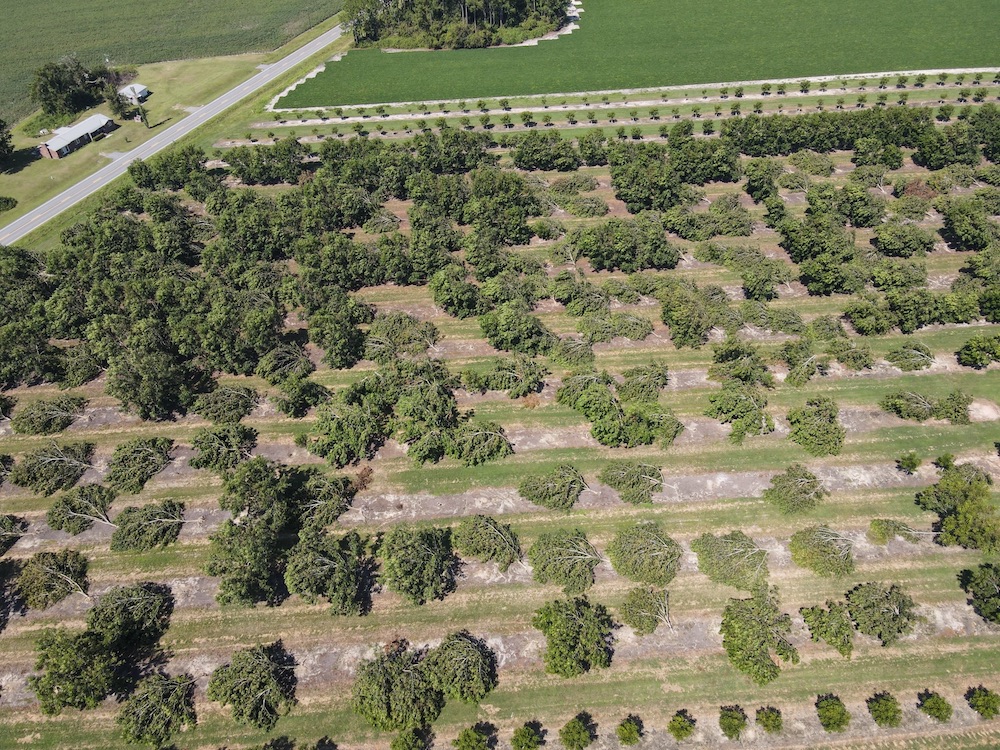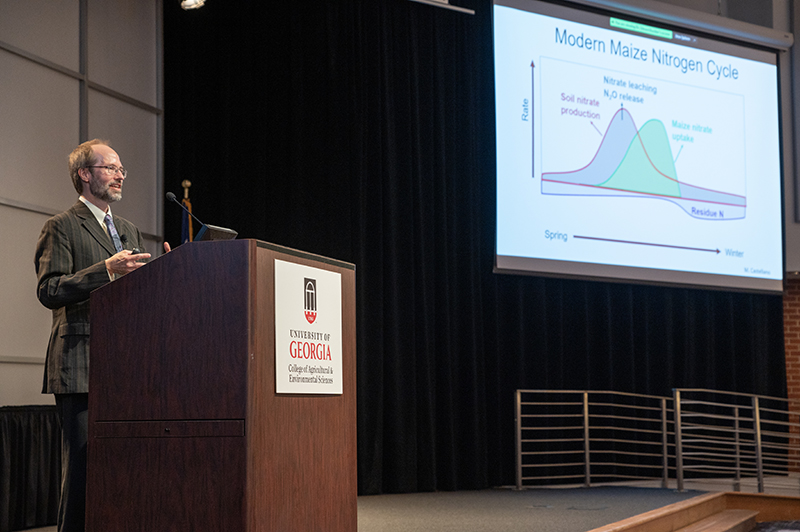The heat was on. Rain was scarce, and drought expanded across Georgia in May. The state got a reprieve from the waves of severe weather, which swept through in April, but scattered wind and hail damage did occur.
Temperatures were above normal everywhere in Georgia for a fourth straight month. In Atlanta, the monthly average temperature was 70.9 degrees F (1.1 degrees above normal), in Athens 70.4 degrees (1.3 degrees above normal), Columbus 74 degrees (1.7 degrees above normal), Macon 72.3 degrees (1.3 degrees above normal), Savannah 75 degrees (2.2 degrees above normal), Brunswick 75.3 degrees (1.6 degrees above normal), Alma 74.6 degrees (0.8 degree above normal), Valdosta 75.4 degrees (2.7 degrees above normal) and Augusta 71.9 degrees (1.6 degrees above normal).
This spring has been the second warmest in Columbus since 1948, the ninth warmest in Atlanta since 1878, and the tenth warmest in Savannah since 1871, when records began at each location.
Several record daily high and low temperatures were broken. Many more record highs and a few record lows were tied. Athens set a record low temperature May 5, when a reading of 37 degrees broke the old record of 38 degrees set in 1940. Light frost was reported in a few locations but did not cause damage to crops.
Macon reported 96 degrees May 12, breaking the old record of 95 degrees set in 1967. Savannah recorded 99 degrees, breaking the old record of 97 degrees set in 1956. Alma and Columbus broke or tied daily high temperature records on seven and eight days, respectively, during the month.
April was very dry across most of Georgia, with the exception of the northern quarter of the state. The driest areas were the south-central and southwest regions. Most of the rainfall this month came from thunderstorm activity, which is highly variable.
The highest monthly total precipitation from National Weather Service reporting stations was 2.93 inches in Atlanta (1.02 inches below normal). The lowest was in Brunswick at 0.58 inch (2.11 inches below normal). Valdosta received 1.20 inches (2.04 inches below normal), Athens 0.82 inch (3.04 inches above normal), Alma 0.85 inch (2.19 inches below normal), Columbus 0.65 inch (2.97 inches below normal), Macon 0.66 inch (2.32 inches below normal), Savannah 0.77 inch (2.84 inches below normal) and Augusta 2.50 inches (0.45 inch above normal).
It was the ninth driest May in Savannah since records began in 1871, the seventh driest in Athens since 1857, the third driest in Columbus since 1948, and the fifth driest in Macon since 1892. For the spring period of March through May, it was the sixth driest in Columbus since 1948 and the ninth driest in Macon since 1892.
There were no daily rainfall records set in May.
The highest single-day rainfall from Community Collaborative Rain, Hail and Snow Network stations was 3.53 inches in DeKalb County May 27. Another nearby observer reported 3.07 inches on the same day. The highest monthly total precipitation of 4.38 inches was measured at the same location, with two additional monthly totals of 4.12 and 4.02 inches reported by other observers in DeKalb County in May.
Severe weather was reported on six days. No tornadoes were reported, but scattered hail and wind damage did occur. On May 26, almost 200,000 customers in metro Atlanta and 240,000 customers across the state were without power due to strong storms. Three people died in Atlanta due to falling trees, and a UPS truck was set on fire. Lightning sparked several house fires. Windshields were damaged by softball-size hail in Fannin County.
A large forest fire consumed more than 230 square miles of swampland and forest mostly in the Okefenokee National Wildlife Refuge in southeastern Georgia. The fire was apparently set by lightning April 28 and is the largest in the area since 2007, when more than 500,000 acres burned during Georgia's last drought.
Drought expanded across most of the state by the end of the month. The southern three-quarters of the state was in drought conditions by late May, and more than 50 percent was considered to be in extreme drought.
Soil moisture conditions declined, as the lack of rainfall and high temperatures accelerated evapotranspiration and stressed plants. By the end of the month, more than 80 percent of subsurface soil moisture was reported as short to very short.






.jpg)